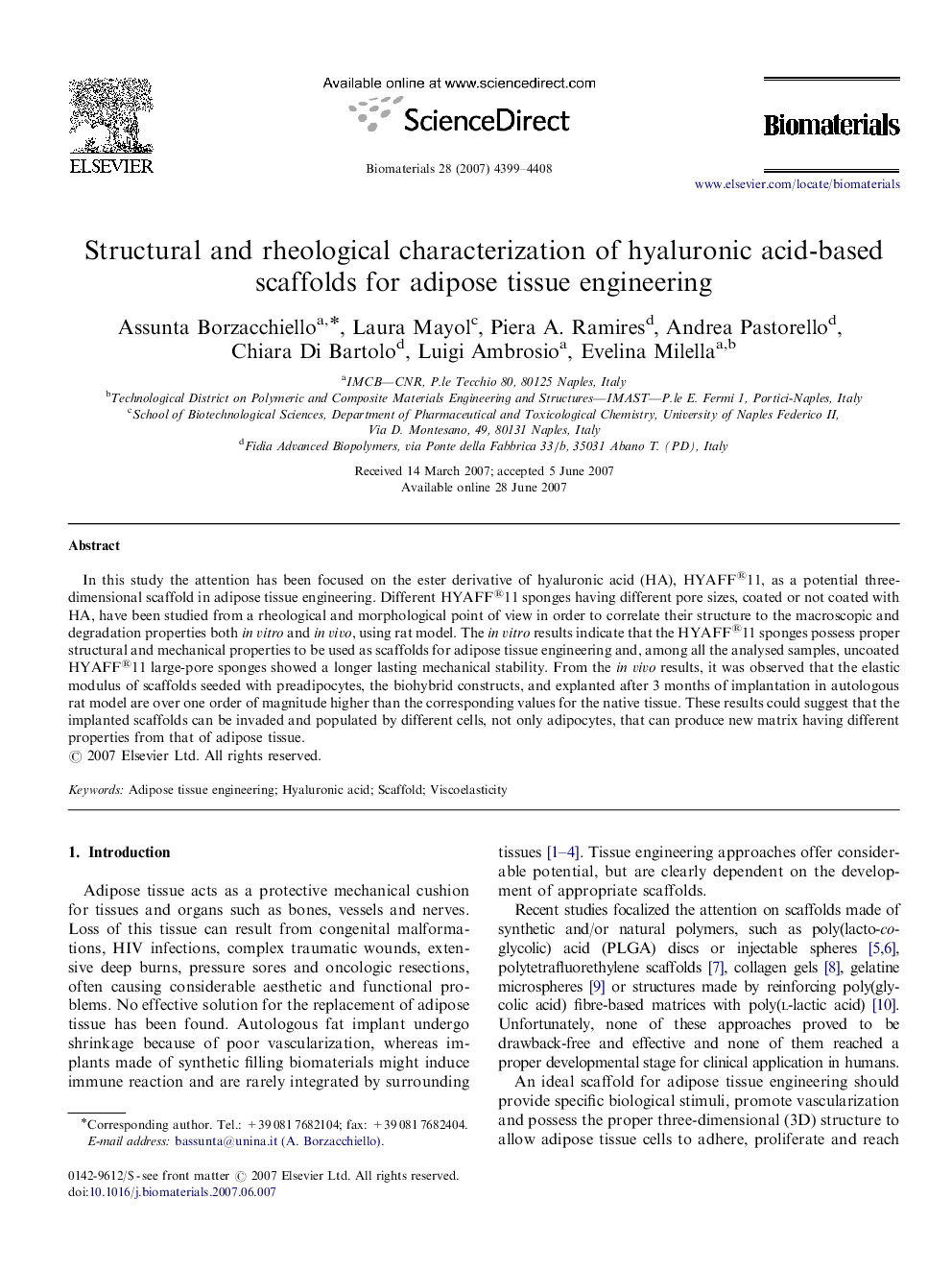| Article ID | Journal | Published Year | Pages | File Type |
|---|---|---|---|---|
| 10742 | Biomaterials | 2007 | 10 Pages |
In this study the attention has been focused on the ester derivative of hyaluronic acid (HA), HYAFF®11, as a potential three-dimensional scaffold in adipose tissue engineering. Different HYAFF®11 sponges having different pore sizes, coated or not coated with HA, have been studied from a rheological and morphological point of view in order to correlate their structure to the macroscopic and degradation properties both in vitro and in vivo, using rat model. The in vitro results indicate that the HYAFF®11 sponges possess proper structural and mechanical properties to be used as scaffolds for adipose tissue engineering and, among all the analysed samples, uncoated HYAFF®11 large-pore sponges showed a longer lasting mechanical stability. From the in vivo results, it was observed that the elastic modulus of scaffolds seeded with preadipocytes, the biohybrid constructs, and explanted after 3 months of implantation in autologous rat model are over one order of magnitude higher than the corresponding values for the native tissue. These results could suggest that the implanted scaffolds can be invaded and populated by different cells, not only adipocytes, that can produce new matrix having different properties from that of adipose tissue.
